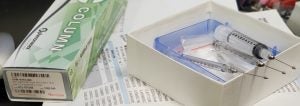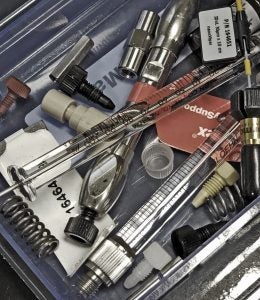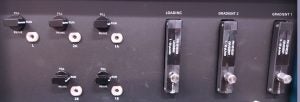AB SciEX TripleTOF 5600+ LC-MS/MS (SciEX)
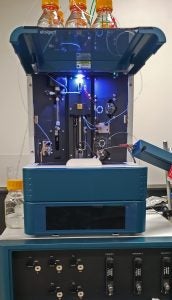
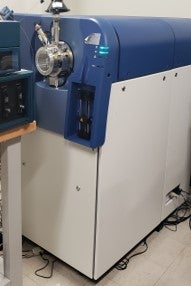
Applications:
- Untargeted metabolomics and lipidomics: identification and quantification of thousands of small molecule metabolites and lipids extracted from complex matrices including tissue, cells, urine, media, and bacteria.
- Identification of unknown small molecules: identification of isolated small molecules obtained during chemical synthesis reactions, extracted and isolated from biological samples, or reactions intermediates during enzymatic reactions.
Our AB SciEX TripleTOF 5600+ LC-MS/MS system provides users a comprehensive platform for exploratory and high-resolution unknown compound analysis and global metabolomics profiling. Coupled to the TripleTOF 5600+ mass spectrometer is a Eskigent NanoLC 400 series HPLC. The nanoLC enables a full range of analytical workflows necessary for the identification of novel biomarkers, small molecule metabolites, and lipids. With the increased sensitivity for small molecule metabolomics analysis gained by using microflow LC and the wide variety of column chemistries (i.e. reverse phase, HILIC) available in the facilities, our microLC methods for small molecule identification and untargeted lipidomics and metabolomics provides users the flexibility necessary to separate a wide range of metabolites and small molecules for mass spectrometry analysis. Integrating the nanoLC 400 with the AB SciEX TripleTOF 5600+ provides high-resolution workflows for metabolomics and lipidomics analysis and the ability to identification hundreds of thousands of features in complex samples.

How long does it take?
Using optimized gradients for the separation of a wide-range of polar and non-polar metabolites, our standard workflows for untargeted metabolomics and lipidomics analysis generally require a ~35-40 min gradient. Data are collected are collected in both positive and negative mode using IDA-MS methods. Methods targeting specific classes of metabolites – for example bile acid salts, TCA cycle intermediates, etc. can be developed. MS analysis for small molecule identification varies widely, depending largely on the purity of the samples and the complexity of the small molecules being analyzed.
